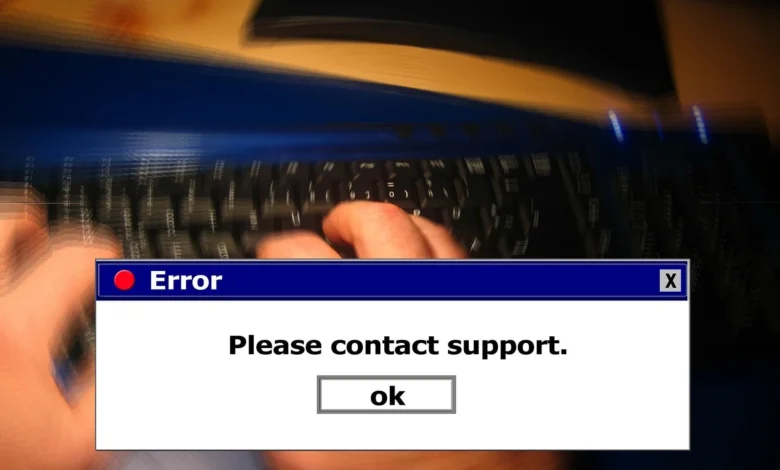Mastering User-Input Errors: How to Tackle Fake Error Message Text Copy and Paste

Encounter fake error message text copy and paste issues? Unravel the mystery with expert advice and practical solutions in this comprehensive guide.
Introduction
In the digital landscape, encountering user-input errors is inevitable. Among these, fake error message text copy and paste issues are particularly frustrating. Whether you’re a seasoned developer or a novice user, navigating through these errors can be daunting. Fear not! This guide aims to equip you with the knowledge and strategies to effectively handle fake error message text copy and paste challenges.
Understanding Fake Error Message Text Copy and Paste
Dealing with fake error message text copy and paste? You’re not alone. These deceptive messages often appear legitimate but are crafted to mislead users. They can surface on various platforms, from websites to applications, causing confusion and hindering user experience.
Navigating such errors requires a blend of vigilance and technical know-how. Let’s delve into actionable insights to tackle this issue head-on.
Identifying Fake Error Messages
Fake error messages mimic genuine alerts, making them tricky to spot. They often employ scare tactics, urging users to take immediate action. However, discerning eyes can detect subtle inconsistencies, such as grammatical errors or unusual formatting, hinting at their fraudulent nature.
Common Scenarios
In the realm of fake error message text copy and paste, several scenarios are prevalent. From phishing attempts to malware dissemination, perpetrators employ diverse tactics to exploit unsuspecting users. Recognizing these scenarios empowers users to respond effectively and safeguard their digital assets.
Strategies for Mitigation
Encountering a fake error message text copy and paste can be unsettling, but proactive measures can mitigate potential risks. Let’s explore practical strategies to navigate these challenges seamlessly.
Verification Protocols
Implement robust verification protocols to authenticate error messages. Utilize multi-factor authentication and cryptographic techniques to validate the integrity of messages. By verifying the sender’s identity and ensuring message integrity, you can thwart fraudulent attempts effectively.
User Awareness Campaigns
Educating users is paramount in combating fake error message text copy and paste. Conduct comprehensive awareness campaigns to familiarize users with common tactics employed by malicious entities. Empower them to scrutinize messages critically and report suspicious activities promptly.
Security Protocols
Fortify your systems with robust security protocols to fortify against potential threats. Regularly update antivirus software, firewall configurations, and intrusion detection systems to bolster your defense mechanisms. Additionally, implement stringent access controls and encryption protocols to safeguard sensitive data from unauthorized access.
FAQs
Q: How do I differentiate between a genuine error message and a fake one?
A: Genuine error messages often provide specific details regarding the encountered issue, accompanied by troubleshooting steps. Conversely, fake error messages exhibit generic language, urging immediate action without offering coherent explanations.
Q: Can fake error messages pose security risks to my system?
A: Absolutely. Fake error messages serve as conduits for various cyber threats, including malware installation and phishing attacks. Exercise caution when encountering such messages to mitigate potential risks.
Q: Are there any telltale signs of a fake error message?
A: Yes, several red flags indicate the presence of a fake error message. Look out for grammatical errors, unusual formatting, and coercive language demanding immediate action.
Q: How can I report fake error messages?
A: Most platforms provide avenues to report suspicious activities, including fake error messages. Utilize designated reporting mechanisms or contact customer support to escalate your concerns effectively.
Q: What steps should I take upon encountering a fake error message?
A: Upon encountering a fake error message, refrain from taking immediate action. Instead, scrutinize the message for inconsistencies and verify its authenticity through reliable channels. Report suspicious activities to the appropriate authorities promptly.
Q: Can user education mitigate the impact of fake error messages?
A: Absolutely. User education plays a pivotal role in combating fake error messages. By raising awareness and fostering a culture of vigilance, users can mitigate the impact of fraudulent attempts effectively.
Conclusion
Navigating fake error message text copy and paste challenges demands a blend of vigilance, technical expertise, and user education. By familiarizing yourself with common tactics employed by malicious entities and adopting proactive mitigation strategies, you can safeguard your digital assets effectively.
Remember, staying informed and exercising caution are your best defenses against fraudulent attempts. Together, let’s fortify our digital ecosystem and ensure a safer online experience for all.



